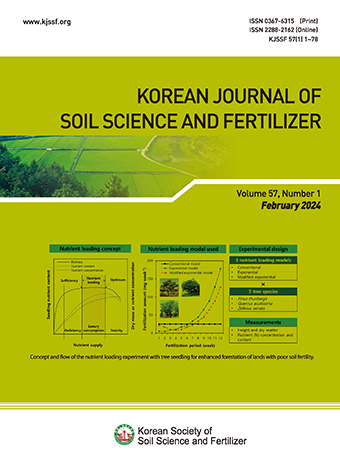Original research article
Abstract
References
Information
Forster, P., V. Ramaswamy, P. Artaxo, T. Berntsen, R. Betts, D.W. Fahey, J. Haywood, J. Lean, D.C. Lowe, and G. Myhre. 2007. Changes in atmospheric constituents and in radiative forcing, Chapter 2. p. 129-234. In S. Solomon et al. (ed.) Climate Change 2007: The Physical Science Basis. Cambridge University Press, Cambridge, United Kingdom and New York, NY, USA.
Scheer, C.R. Wassmann, K. Kienzler, N. Ibragimov, and R. Eschanov. 2008. Nitrous oxide emissions from fertilized, irrigated cotton (Gossypium hirsutum L.) in the Aral Sea Basin, Uzbekistan: Influence of nitrogen applications and irrigation practices. Soil Biol. Biochem. 40:290-301.
10.1016/j.soilbio.2007.08.007
- Publisher :Korean Society of Soil Science and Fertilizer
- Publisher(Ko) :한국토양비료학회
- Journal Title :Korean Journal of Soil Science and Fertilizer
- Journal Title(Ko) :한국토양비료학회 학회지
- Volume : 55
- No :2
- Pages :162-174
- Received Date : 2022-05-19
- Revised Date : 2022-05-30
- Accepted Date : 2022-05-30
- DOI :https://doi.org/10.7745/KJSSF.2022.55.2.162



 Korean Journal of Soil Science and Fertilizer
Korean Journal of Soil Science and Fertilizer








